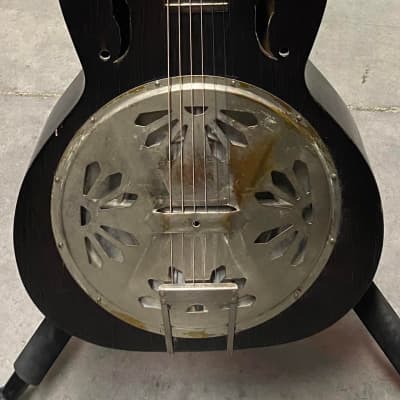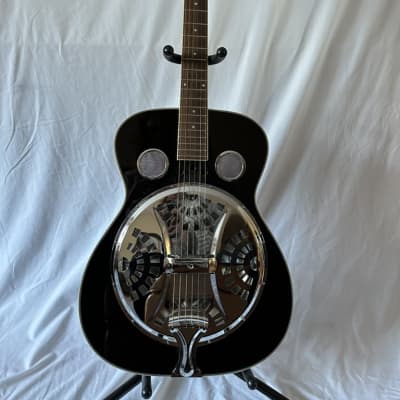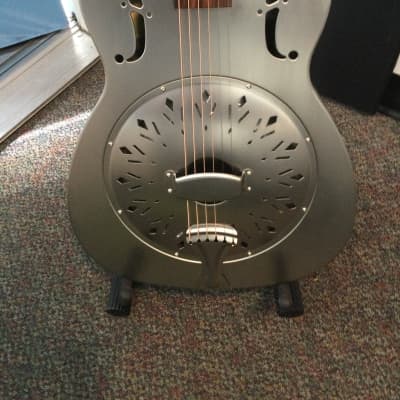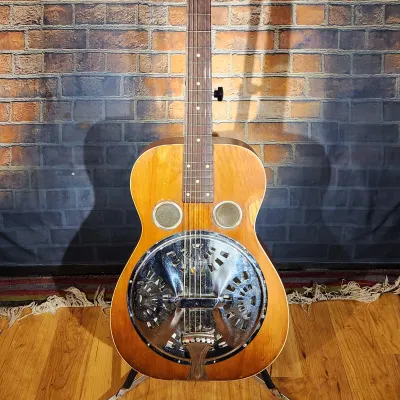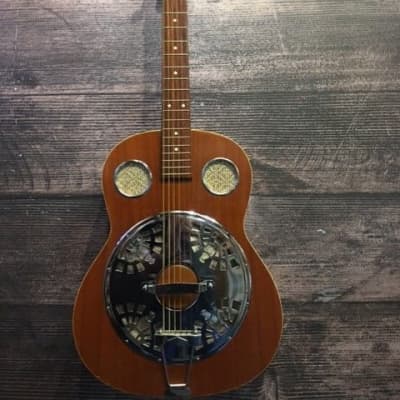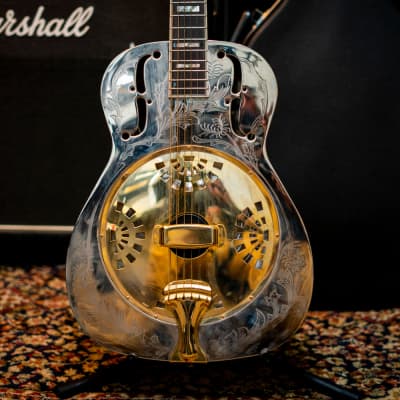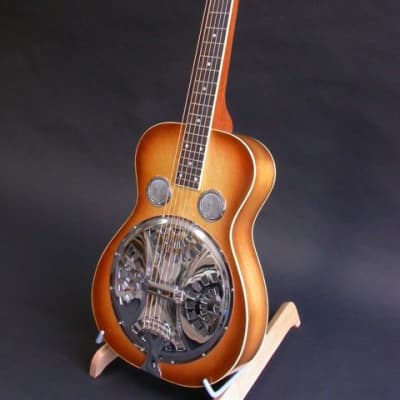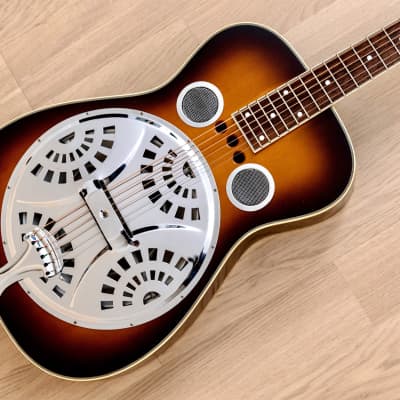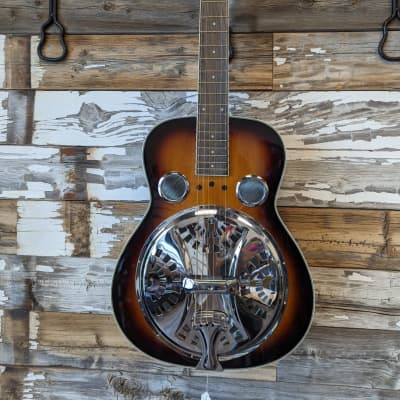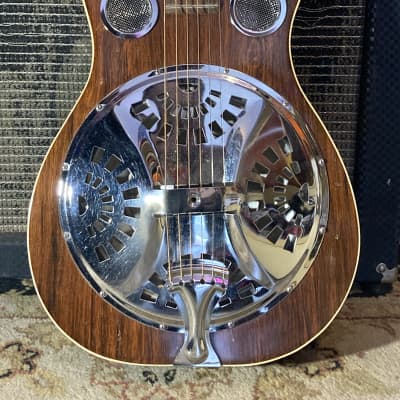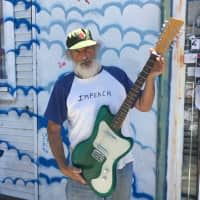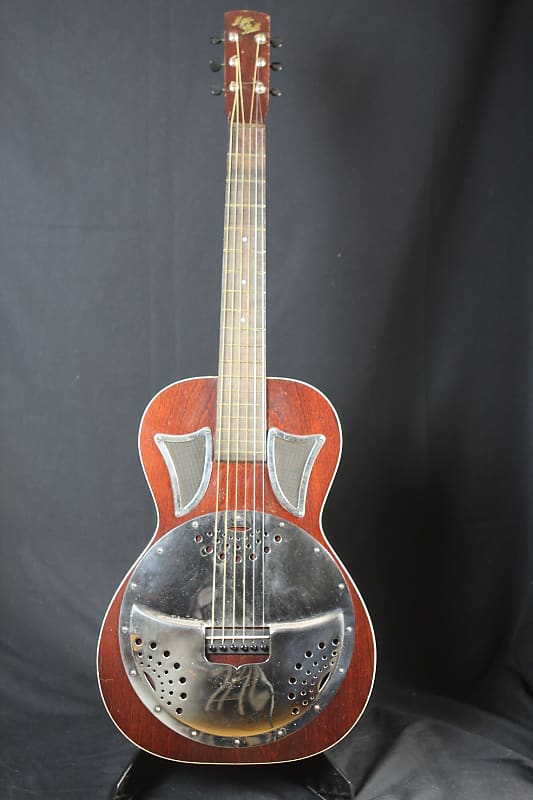

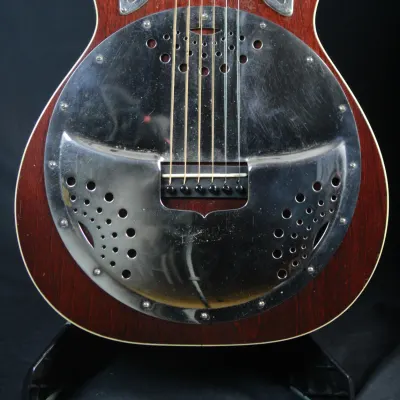
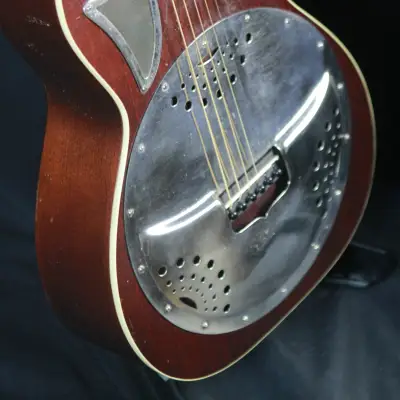
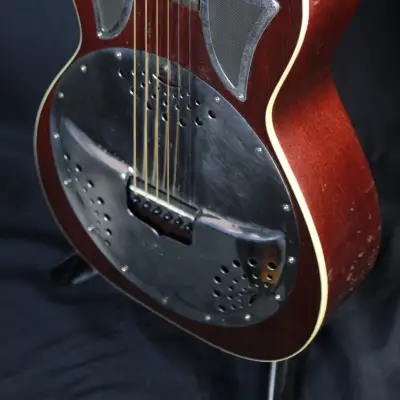
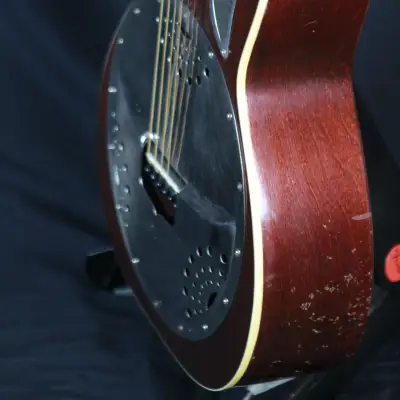
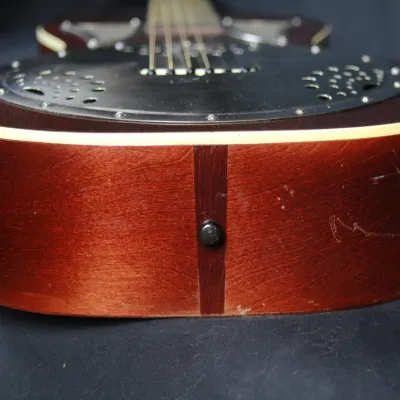
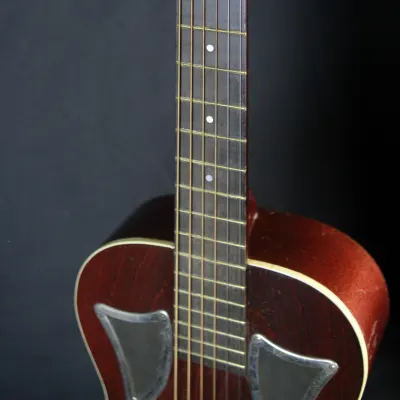
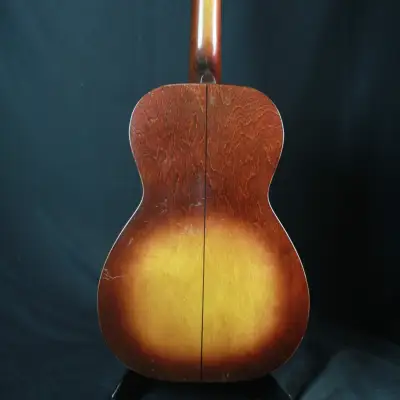
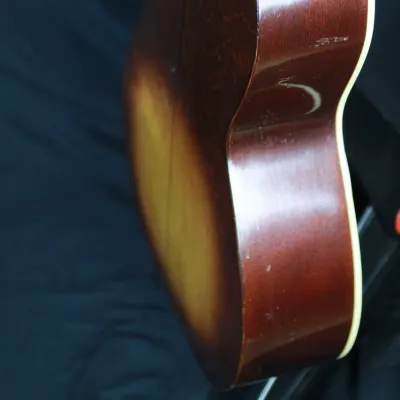
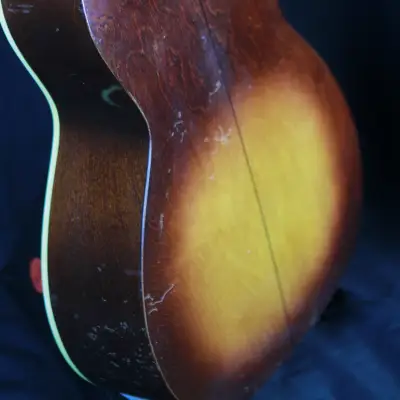
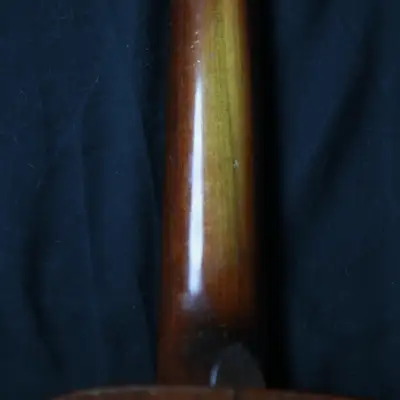
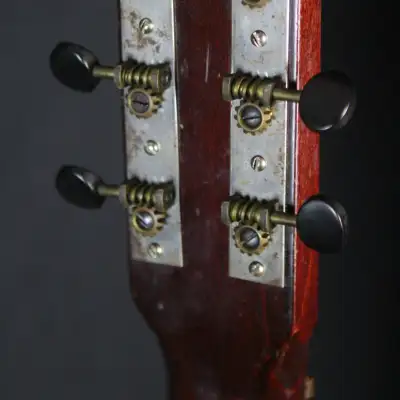
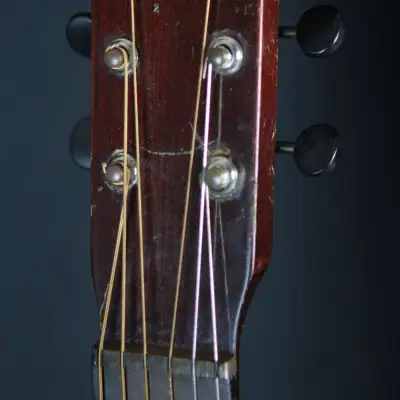
1930S REGAL-MADE MAYBELL SPRUCE-DISC RESONATOR GUITAR.
We've found a sweet sounding and ridiculously cool looking guitar oddity made by Regal in Chicago for Slingerland's Maybell brand name.
Instead of round soundscreens, they have droopy, downward shape teardrop (space alien) "eyes" that make an oversize elongated soundscreen. At that time some other guitar makers made "Faux" resos that were a real fake by simply screwing a nickel coverplate onto a regular guitar top ( no real attempt at a reso sound system). However a Slingerland Maybelle Cathedralola was a "Faux" reso ( didn't have a cone) but they DID attempt to make a reso under that coverplate made from a different WOOD than the rest of the top. So they cut a circle in the top and put in a wooden disc made from spruce or solid birch---i.e. a flat disc of wood to do the vibrating hjob of a "cone'. So this particular reso is a Faux reso that has a cool factor, and funky tone and halfway works at attempting to imitate reso tone. They did this to avoid lawsuit by the Dopyeras ( for metal cone patent infringement). The Dopyeras in late 1931 had sued the Shireson Co. of L.A. for imitating their patented cone--and the case was still dragging in the courts (undecided) by 1934. Slingerland didn't want to get dragged into metal cone lawsuit so they invented a "reso' where the bridges sat on a wooden hardwood disc. The banjo & drum part of Slingerland Co. was much bigger and this faux reso "experiment (with Regal bodies) only lasted a few years in the mid thirties.
This instrument had some extensive work done by Jake Wildwood who kindly granted us permission to use his shop notes from his excellent and educational blog:
My work included assessing and sprucing-up an old "neck bolt" job that was installed in the heel (The heel, thus, has a patched area that replaces a weird wooden plug that was installed by whoever else mucked-about with, replacing said bad replacement shafts on the tuners, much work at the bridge (shave, bridge pin hole fill and relocation job, recut of the saddle slot to get it in the proper place and compensated, and recoloring/finishing back to black), a fret level/dress, side dot install, and good setup with 54w-12 strings.
The new saddle slot is compensated and the new saddle is, too. My new pinholes follow the line of the saddle for equal back-angle on it like on many new Martin guitars.
It plays perfectly with 3/32" EA and 1/16" DGBE action at the 12th fret and the neck is straight. There's good back-angle on the saddle and a full 1/8" or so of height at the saddle area for seasonal adjustments (though the design of these guitars makes them pretty dang stable).
Specs-wise, this guitar is basically a "parlor" shape -- just a hair smaller than Martin's 12-fret 0 size. The lower bout is 13" across and the sides at the endblock have 4 1/8" depth. It has a 24" scale length and a 1 3/4" nut width. The board is flat and the back of the neck is a big D-shaped profile. String spacing at the nut is 1 1/2" and it's 2 3/8" at the saddle. Anywhere where you might use a smaller-bodied resonator is where you'd use this -- country-blues, fingerpicked ragtime or old-time, choppy chord-chomping for jumpy jazz or old popular tunes... stuff like that. It also works in a pinch as a zippy lead instrument, though the short scale grack of the tone tends to suggest a bluesbox to me.
The woods used are pretty typical for a Regal-made MayBell guitar, save the thicker birch ply top which is usually found on Regal-made aluminum cone resonator guitars. The sides and back are solid birch, the neck is poplar, and the fretboard and bridge are "ebonized" maple.
The tuner ferrules and shafts are replacements, though the original wood nut is extant.
The fretboard has 3 pearl dots in it. The frets are the smallish, original brass ones and they've still got some life left in them after the level/dress job.
Who can argue with the hardware? Those soundholes are so cool. The binding, by the way, is celluloid and not painted-on. Regal was smart when putting these together, too, and added felt backing to all of the metal bits touching the top -- no rattles, please!
There's some minor scritchy-scratch on the back and sides, but overall the guitar is very clean
Only one crack on the guitar -- a tight, glued-up, small hairline on the side near the heel.
Ships in Chipboard Case
Reverb Buyer Protection
Reverb has your back if your item is lost, damaged, or doesn't match its description. Simply report any issues within 7 days and we'll help you get a full refund.Learn more about Reverb Buyer Protection.
| Listed | a year ago |
| Condition | Good (Used) Good condition items function properly but may exhibit some wear and tear.Learn more |
| Brand | |
| Model |
|
| Finish |
|
| Categories | |
| Year |
|
| Made In |
|
| Body Shape |
|
